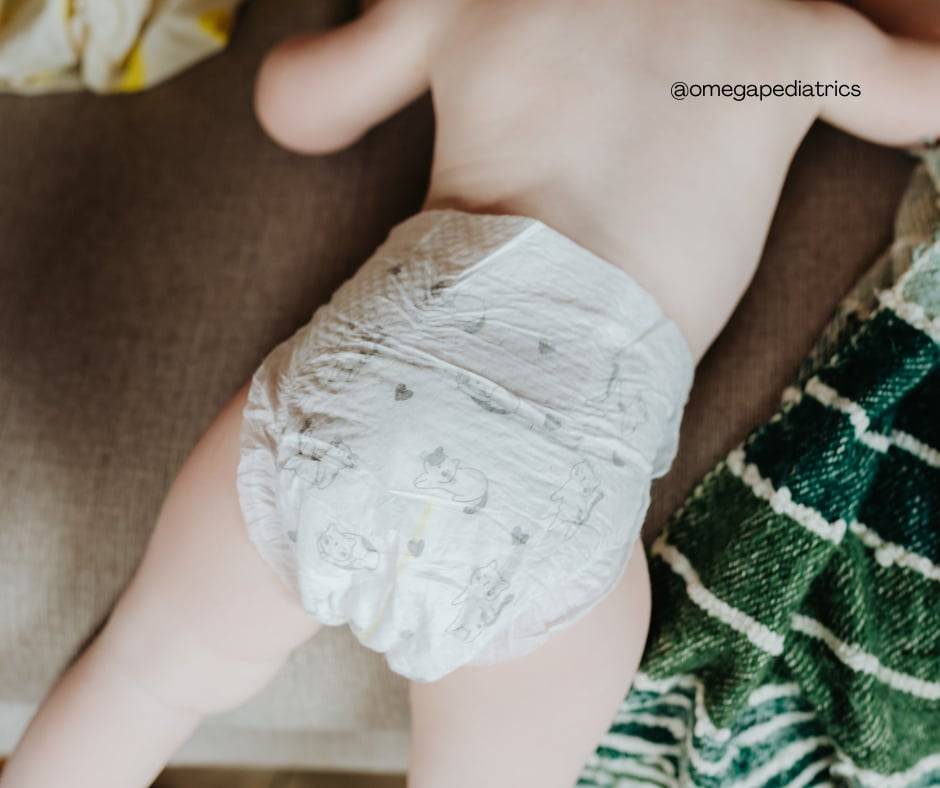Table of Contents
Infant circumcision is a surgical procedure involving the removal of the foreskin of the penis. The execution of this practice has been a controversy for many years, thus, leading to varying views.
As a new parent, obtaining accurate information is crucial to determine whether or not to undergo the procedure. Gain extensive knowledge about the pros and cons of conducting circumcision on infants from this comprehensive guide.
This guide hopes to provide useful information that will equip you with the ability to make a well-informed choice about subjecting your newborn to the procedure.
Understanding Infant Circumcision
The topic of infant circumcision has sparked arguments since it involves the surgical removal of the foreskin that encloses the end of the penis. Its necessity has been questioned by medical professionals, parents, and ethicists.
Despite its longstanding tradition, many are beginning to question whether it should be performed on male infants. This translates to deeply analyzing its medical, historical, cultural, and ethical dimensions which is essential to our understanding of the issue.
Cultural and Religious Perspective

Circumcision has been a custom among various cultures and religions for centuries when viewed from a historical context. It has been associated with symbolic meanings, comprising religious identity, cultural tradition, and hygiene.
In some cultures, infant circumcision is considered a rite of passage or a way to conform to societal norms.
Medical Perspective
Medical justifications for infant circumcision involve potential health benefits. Studies have shown that it reduces the risk of urinary tract infections, penile cancer, and sexually transmitted infections which include HIV.
However, the overall health benefits are debated. Several people argue that the risks and benefits should be weighed carefully before making a decision.
The procedure itself involves a trained healthcare professional using various techniques to remove the foreskin. Local anesthesia is typically used to minimize pain and discomfort. Though complications are rare, they can still occur after surgery.
Taking the necessary measures after surgery is indispensable for a smooth recovery. To mitigate any possibility of complications, it is vital to implement the required after-circumcision care.
Ethics
Ethical considerations arise when discussing infant circumcision. Some argue that it violates a baby’s right to bodily autonomy and consent since it’s an irreversible procedure performed without the child’s consent.
Others argue that parents have the right to make decisions about their child’s health and well-being. This takes into account cultural and religious beliefs.

Pros of Infant Circumcision
Infant circumcision is a topic that elicits varied opinions and discussions. Advocates contend that the procedure offers various possible advantages. Here are a few of the benefits related to infant circumcision:
Hygiene
Circumcision is often supported by the argument that it enhances genital hygiene. By removing the foreskin, it becomes easier to maintain penis hygiene. Reducing the risk of hygiene concerns such as smegma accumulation.
Reduced Risk of UTI
Research indicates that it lessens the possibility of urinary tract infections. These infections may result in kidney-related complications. Circumcision acts as a preemptive step in protecting against such infections.
Decreased Risk of STDs
Studies reveals that circumcision reduces the likelihood of obtaining sexually transmitted infections. While safe sex practices and vaccinations remain crucial, circumcision offers an extra layer of protection.
Prevention of Phimosis and Balanoposthitis
Circumcision prevents conditions like phimosis, where the foreskin is too tight and can’t be properly retracted which causes discomfort and potential complications. It also reduces the risk of balanoposthitis, an inflammation of the foreskin and glans.
Lower Incidence of Penile Cancer
Studies indicates that circumcised males have a lower incidence of penile cancer. The removal of the foreskin eliminates the environment that fosters the growth of cancer-causing agents.
Potential Psychological Benefits
Some proponents argue that circumcision may have psychological benefits, such as increased confidence or a sense of conformity within certain cultural or social contexts.
Cultural and Religious Reasons
Several families find circumcision an important cultural or religious practice. It may symbolize identity, tradition, or adherence to religious beliefs. Respecting cultural diversity and religious freedom is a crucial aspect of societal acceptance.

Cons of Infant Circumcision
Pain and Trauma
Infant circumcision is a painful procedure that causes distress to the baby. While anesthesia is often used, it can’t completely eliminate pain. Also, the long-term psychological effects of the procedure aren’t fully understood.
Decreased Sensitivity
The foreskin contains numerous nerve endings, which are believed to enhance sexual pleasure later in life. Removing the foreskin through circumcision can potentially reduce sensitivity, leading to decreased sexual satisfaction for the individual as an adult.
From a scientific standpoint, it’s challenging to study the potential difference in sexual sensation for those circumcised at birth. However, studies involving males circumcised as adults reveal varied outcomes: some reported improved sexual experience, others found it worse, and the majority noticed no significant change. This complexity makes it difficult to draw definitive conclusions about the impact of circumcision on future sexual pleasure.
Expert opinions also reflect this ambiguity. According to Dr. Douglas Diekema, a pediatrician and member of a circumcision task force, the existing data is limited and inconclusive. Thus, while the concern about decreased sensitivity is valid, the actual experiences can vary widely among individuals.
Potential for Complications
Infant circumcision carries the risk of complications which include bleeding, infection, scarring, and damage to the penis. While these risks are generally low, they still exist and have lasting effects on the child’s health.
Limited Health Benefits
While proponents of circumcision argue that it provides health benefits, the evidence supporting these claims is mixed. Other preventive measures achieve similar results without the need for surgery.
Violation of Bodily Autonomy
Infant circumcision comes under scrutiny for its potential violation of an infant’s bodily autonomy. Several individuals consider it a violation of a child’s rights to remove a part of their body without their consent.
Ethics
Infant circumcision has raised ethical issues, as many believe it’s carried out without medical justification. But rather, the decision is largely tied to cultural or religious beliefs. This raises questions about imposing personal beliefs on an infant without their consent.
Cultural Bias
The prevalence of infant circumcision varies across different cultures and regions. Performing the procedure based on cultural norms rather than medical necessity perpetuates a bias that might not align with the individual’s personal beliefs.
Deciding Infant Circumcision: New Parents Guide
It’s important to gather relevant information to make an informed decision if you’re a new parent and considering circumcision for your son.
The Arguments
- Cultural or religious tradition is one of the most common reasons. Many cultures and religions have long-standing practices as a rite of passage or for religious significance. If you’re part of such a group, comprehending this perspective is crucial.
- Some parents consider the enormous health advantages. Nonetheless, it should be highlighted that these benefits aren’t substantial. Practicing good hygiene and safe sexual behaviors can also substantially minimize the risk of illnesses.
- Those who are against circumcision claim that such isn’t needed since it could just lead to harm. They believe that getting rid of the foreskin results in pain, hardship, and probable issues like blood loss, infection, as well as scars.
- It’s also brought out by some individuals that allowing a child’s gender to be established without their consent is a violation of their bodily autonomy. They recommend postponing circumcision until the child is older.
How to Decide
As a parent, your views on whether or not to circumcise your son are the factors that matter. Your views could be influenced by your culture, religion, or personal values.
- Nonetheless, it’s wise to assess the advantages and disadvantages of infant circumcision before making a decision.
- Also, seek advice from a medical expert to acquire updated and applicable insights that are tailored to your personal situation.
Should you decide, ensure that only a qualified healthcare professional is legitimate to perform the procedure. They’re the experts in sterile techniques and pain management strategies to minimize any discomfort for the baby.
How Cost and Insurance Coverage Impact Circumcision Rates in the U.S.
The cost of circumcision plays a significant role in the decision-making process for many parents. The procedure can be expensive, and not all insurance companies provide coverage for it. As fewer insurance providers cover the cost, the out-of-pocket expense for circumcision becomes a burden for many families, leading to a decline in the number of procedures performed.
Beyond financial considerations, the demographics of the U.S. are also shifting, which influences circumcision rates. For instance, certain ethnic groups, such as Black and Hispanic communities, traditionally have lower circumcision rates. As the proportion of births in these communities increases, it naturally contributes to the overall decline in circumcision rates across the country.
In summary, both the financial burden of the procedure due to limited insurance coverage and the evolving demographic landscape significantly affect circumcision rates in the U.S.
Here at Omega Pediatrics, we do everything we can to keep the costs down as much as possible. We also have been channeling the costs of the procedure to payers (Medicaid or Private Insurance). Some of them do pay while the others would come back to say it is not a covered service. Follow this link to book your newborn circumcision.
Ethical Considerations
Bodily Autonomy
One ethical concern surrounding infant circumcision is the issue of bodily autonomy. Critics argue that infants should have the right to make decisions about their own bodies when they are old enough to understand the implications.
By performing circumcision on infants, their ability to choose is taken away without their consent. It raises questions about the ethical justification for subjecting infants to a permanent alteration of their bodies without medical necessity.
Surgical Risks
Another ethical consideration is the potential for physical and psychological harm. Like any surgical procedure, circumcision carries risks. While complications are rare, they can lead to adverse effects on the infant.
Mental Effects
Moreover, various research indicates that circumcision results in enduring mental effects, such as sexual dysfunction or post-traumatic stress. The potential harm associated with circumcision prompts a critical examination of the benefits versus risks.
Religion and Culture
For many societies and cultures, circumcision is deeply rooted in their beliefs and traditions. Ethical considerations in this context call for balancing the rights of the child with the religious and cultural freedoms of the parents.
It becomes a delicate balance between respecting religious and cultural practices while ensuring the welfare and freedom of the child.
Health Advantages
Medical institutions advocate that circumcision offers health advantages, However, there are others who believe that the advantages aren’t substantial to make infant circumcision a customary practice.
Ethical concerns arise when medical recommendations are based on uncertain evidence or when cultural practices overshadow medical necessity.
Should You Decide on Infant Circumcision?
The decision to circumcise an infant is a complex and personal one. While there are potential health benefits. it also raises ethical concerns and probable risks. Before deciding, new parents ought to research, seek medical advice, and reflect upon their beliefs.
Ultimately, when making decisions for their children, parents must prioritize their well-being and weigh the potential benefits against the disadvantages.
FAQ
What is infant circumcision, and why is it performed?
Infant circumcision is the surgical removal of the foreskin of the penis soon after birth. It’s performed for cultural, religious, and potential health reasons.
What are the benefits of infant circumcision?
Circumcision proponents argue that it promotes hygiene, reduces the risk of urinary tract infections (UTIs) and sexually transmitted infections (STIs), prevents certain conditions like phimosis and balanoposthitis, and may have psychological benefits.
What are the benefits of infant circumcision?
Circumcision proponents argue that it promotes hygiene, reduces the risk of urinary tract infections (UTIs) and sexually transmitted infections (STIs), prevents certain conditions like phimosis and balanoposthitis, and may have psychological benefits.
What are the risks associated with infant circumcision?
Risks include pain and trauma for the baby, decreased sensitivity, potential complications such as bleeding or infection, violation of bodily autonomy, and ethical concerns regarding consent and cultural bias.
Comparing Circumcised vs. Uncircumcised Babies
Understanding the differences between circumcised and uncircumcised babies can help parents make informed decisions. Here are some key distinctions:
Hygiene:
Circumcised: Easier to clean as there is no foreskin to retract.
Uncircumcised: Requires regular cleaning under the foreskin to prevent infections.
Health Risks and Benefits:
Circumcised: Lower risk of UTIs and STIs, potential prevention of phimosis.
Uncircumcised: No surgical risks like bleeding or infection; some argue that natural anatomy should be preserved.
Sensitivity:
Circumcised: Potential decrease in sensitivity due to removal of nerve-rich foreskin.
Uncircumcised: Preserves natural sensitivity of the foreskin.
Cultural and Ethical Considerations:
Circumcised: Common in certain cultures and religions, seen as a rite of passage.
Uncircumcised: Viewed by some as respecting bodily integrity and autonomy.
This comprehensive comparison aims to provide a balanced view, helping parents weigh the benefits and risks associated with circumcision and make the best choice for their child.
What are the risks associated with infant circumcision?
Risks include pain and trauma for the baby, decreased sensitivity, potential complications such as bleeding or infection, violation of bodily autonomy, and ethical concerns regarding consent and cultural bias.What are the risks associated with infant circumcision?
Risks include pain and trauma for the baby, decreased sensitivity, potential complications such as bleeding or infection, violation of bodily autonomy, and ethical concerns regarding consent and cultural bias.
Risks and Complications of Surgery
As with any surgery, circumcision comes with risks and potential complications. If performed by an experienced physician in a sterile environment, the risk is low, but not absent. About 1.5% of newborn circumcisions result in minor issues like extra bleeding or infection. Other complications can include poor cosmesis (where the penis doesn’t look right) and penile adhesions. Additionally, the tip of the circumcised penis may become irritated, potentially restricting the urinary opening and leading to urinary tract problems that might require further surgery.
Serious complications, while rare, can include the removal of too much skin, more severe infections, or other damage to the penis. In such cases, follow-up circumcision or reconstructive surgery may be necessary, though these severe outcomes are estimated to occur only in a very small percentage of cases.
Pain During and After Surgery
Infants do feel pain, and anesthesia is used to mitigate this during circumcision, either in the form of topical cream or an injection. Despite anesthesia, many parents choose to forgo circumcision to spare their child the pain of the procedure and recovery, which can be managed but not entirely pain-free. Proper care and infant pain relievers usually help a circumcised penis heal within a few days to a week, but discomfort during this time is common.
Potential Impact on Sexual Pleasure
Another consideration for some parents is the question of sexual pleasure. The foreskin, which is removed during circumcision, contains thousands of nerve endings. Parents might worry that the surgery could negatively impact future sexual pleasure and satisfaction. Scientifically, it’s challenging to study the difference in sexual sensation for those circumcised at birth. However, studies involving males circumcised as adults show mixed results: some report improved intercourse, others find it worse, and the majority notice no significant difference.
By considering these factors—risks of surgery, pain, and potential impacts on future sexual pleasure—parents can make a more informed decision about whether to opt for circumcision.
How should new parents decide whether to circumcise their son?
New parents should consider cultural, religious, and personal beliefs, weigh the potential benefits and risks of circumcision, seek advice from medical professionals, and ensure the procedure is performed by a qualified healthcare provider using sterile techniques.
What are the ethical considerations surrounding infant circumcision?
Ethical concerns include bodily autonomy, surgical risks, potential long-term psychological effects, and balancing religious and cultural practices with the welfare of the child. Parents must prioritize their child’s well-being and reflect on their beliefs before making a decision.
What are the main factors driving the decline in circumcision rates in the U.S. since 1979?
Circumcision rates among newborn American males have seen a notable decline since 1979. Here are the main factors contributing to this trend:
Healthcare Costs and Insurance Coverage
One significant factor is the cost associated with the procedure. Over the years, fewer insurance companies have been covering circumcisions. This increase in out-of-pocket expenses has led many parents to forgo the procedure for their newborns.
Changing Demographics
America’s shifting demographics also play a substantial role. There has been a rise in the proportion of Black and Hispanic births in the U.S., and these groups traditionally have lower rates of circumcision.
Medical Guidance and Recommendations
Influential medical organizations have also impacted circumcision rates. For instance, the American Academy of Pediatrics (AAP) updated their policy in 2012 to acknowledge some medical benefits of circumcision, such as reducing the risk of urinary tract infections (UTIs). However, they stopped short of recommending the procedure be performed universally, advising parents to make decisions based on personal beliefs instead.
By looking at these factors—rising costs, evolving demographics, and nuanced medical guidance—one can understand why circumcision rates have decreased since the late 20th century.
What does the American Academy of Pediatrics say about circumcision in newborn males?
Current Stance of the American Academy of Pediatrics on Circumcision
In 2012, the American Academy of Pediatrics (AAP) updated its policy on circumcision, highlighting several potential medical benefits. They noted that circumcision can help prevent urinary tract infections (UTIs), among other health advantages.
However, the AAP concluded that these benefits, while significant, do not mandate routine circumcision for all newborn males. Instead, they encourage parents to make an informed decision, considering their own religious, ethical, and cultural beliefs.
As of now, it’s important to note that the 2012 policy statement technically expired in 2017, and a new statement has yet to be released. Therefore, while the 2012 recommendations provide guidance, they are not the latest official stance.
How Should Parents Care for an Uncircumcised Penis?
Caring for an uncircumcised penis involves maintaining cleanliness and hygiene to prevent infections and other complications. Here’s a comprehensive guide on how parents can ensure their child’s uncircumcised penis remains healthy.
Daily Cleaning Routine
Gentle Washing: Clean the penis during diaper changes and baths using warm water. Avoid using harsh soaps, as they can irritate sensitive skin. Mild, fragrance-free soaps are a safer choice.
Do Not Force Retract: In infants and young children, the foreskin is usually not fully retractable. Forcing it back can cause pain and damage. The foreskin will naturally loosen over time, usually by adolescence.
Drying Thoroughly: After cleaning, ensure the area is dry before putting on a fresh diaper. Moist environments can promote the growth of bacteria and yeast.
When the Foreskin Becomes Retractable
As your child grows and the foreskin becomes retractable, additional steps should be incorporated into the hygiene routine:
Regular Retraction: Gently retract the foreskin and clean underneath with warm water. This helps remove dead skin cells, urine, and other debris that may become trapped.
Proper Rinsing: Make sure to rinse away all soap to avoid irritation under the foreskin.
During Potty Training and Beyond
Teach Good Hygiene Practices: As children start potty training and become more independent, teach them how to properly clean their penis. Encourage them to retract the foreskin gently and wash underneath during bath time.
Monitoring for Signs of Infection: Keep an eye out for redness, swelling, or unusual discharge, which can indicate an infection. If you notice any of these signs, consult a healthcare provider promptly.
Handling Potential Issues
Phimosis: This condition, where the foreskin cannot be fully retracted, is normal in young boys. If it persists into adolescence and causes issues, a healthcare provider can recommend treatment options.
Balanitis: Inflammation of the foreskin and penis head can occur if proper hygiene isn’t maintained. Symptoms include redness and soreness. Treatment typically involves improved hygiene and, in some cases, medication prescribed by a doctor.
Key Takeaways
Start Early with Gentle Care: Begin a gentle cleaning routine from infancy, and adapt as the foreskin becomes retractable.
Educate as They Grow: Teach your child good hygiene practices to follow throughout their life.
Consult Healthcare Professionals: For persistent issues or concerns, always seek advice from healthcare providers to ensure proper care and avoid complications.
By following these steps, parents can effectively care for an uncircumcised penis, promoting good hygiene and health from infancy through adolescence.



